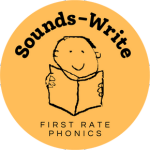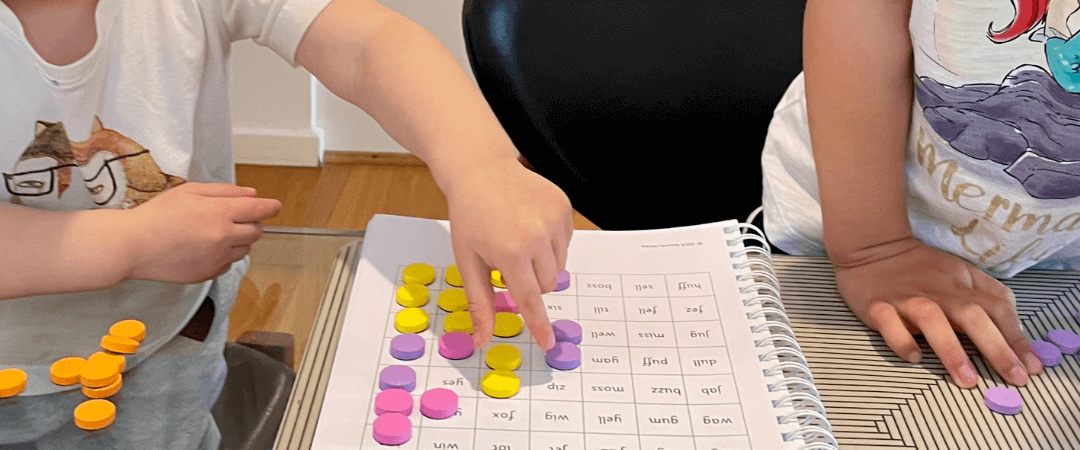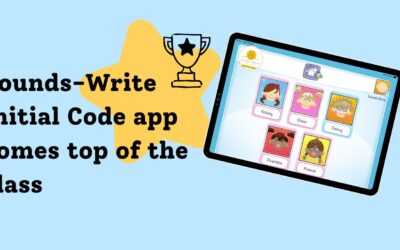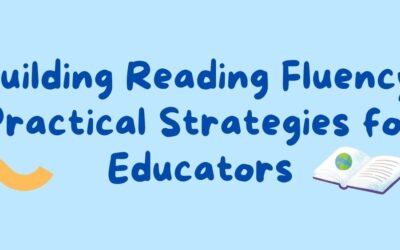Susan joined the Sounds-Write program after choosing to homeschool her two young children. In this blog, she shares her successes, challenges, and how the program supported her to teach her children to become proficient readers, writers and spellers.
Why homeschooling my children was right for our family
I have two daughters who are eight and five, and decided to homeschool because I wanted to maintain a strong attachment and presence while they were very young, and delay sending them to school until they were mature enough to cope with its pressures and influences. I don’t have a teaching background – before having children, I was a lawyer, and didn’t even know what phonics was.
Choosing Sounds-Write
I mentioned my decision to homeschool to a good friend who is Head of Learning Support at a primary school in Canberra, and she recommended Sounds-Write, which they were using with great success. In her opinion, Sounds-Write was the best phonics program available, and if I were willing to invest in the training, my children would realise the benefits.
In the beginning, I couldn’t deliver the lessons without reading word-for-word from the script. It was all so foreign, but I practised on my husband until I got the confidence to get started. The first day that I sat down with my daughter I was so nervous! But it only took a week or two before I got the hang of it. Using the same lesson format day in, day out, enabled me to quickly develop fidelity in my delivery, and just as Sounds-Write reduces cognitive load for the student, it reduced cognitive load for me too.
Consistency is key
Consistency can be one of the biggest challenges in homeschooling, so I made sure we did Sounds-Write Monday to Friday, first thing in the morning. I found that working one-on-one, we didn’t always need 30 minutes a day. My daughter picked things up quickly and we moved through most of the sessions in 15-20 minutes. Where my daughter was getting a little bored and had high accuracy, we moved on to the next unit after one week. We ended up completing the Initial Code in about 6 months.
We had a break over Christmas, and when I sat down to prepare for the Extended Code, I couldn’t remember anything from my training! Luckily, I found the Sounds-Write Revisited course. By the time I had finished the course, quite a lot of time had passed, so I used the assessments from the manual to determine which unit we should start with. She had no difficulties with blending, segmenting, phoneme manipulation or code knowledge, so I knew we were ready to jump in.

[My daugher] has undergone recent academic testing using the WIAT-III, and her reading achievement ranks on the 90 percentile for her age.
Susan Tracey, Homeschooling Parent
Challenges with planning
I found lesson planning for the Extended Code much more challenging as a homeschooling parent. Because one-on-one lessons were so much faster than in a classroom, I made the mistake of giving my daughter at least twice the number of words to work on. I thought that by exposing her to a greater number of words, she would simply learn more spellings. It wasn’t until halfway through the Extended Code, that I realised it hadn’t stuck.
My mistake had been teaching far too many words per lesson, which caused cognitive overload. The volume of words also didn’t allow for the necessary number of exposures required for long-term memory. Added to this, we went through periods of significant familial disruption, which contributed to some strong resistance against wanting to do Sounds-Write at all. Periods in which we didn’t achieve 4-5 sessions per week saw us stagnate.
Seeking support from Sounds-Write
Discovering that most of our Extended Code work had not been effective was devastating. I was overwhelmed, confused, and upset over the time lost. Unsure of how to pick up the pieces, I reached out to the Sounds-Write community for advice. I received so much encouragement and support. One of the Sounds-Write trainers, Jacinda, helped me understand what had gone wrong and how to tailor a more effective plan. She advised me to restart at the beginning of the Extended Code, combine ‘first’ and ‘more spellings’ units in two-week blocks to save time, limit the number of words per unit to 12-16, focus on polysyllabic words, include daily dictation and consistent revision.
Teaching beyond early reading
My daughter started school this year (Year 3) and is coping beautifully. Despite our setbacks, Sounds-Write has given her the tools and the confidence to flourish. We sometimes find ourselves in debates over how best to syllabify or segment difficult words, or who can come up with a word’s most precise meaning. These things demonstrate to me that she has a thorough conceptual grasp of what she’s being taught. I’ve also just completed the Sounds-Write Year 3-6 course, and I intend to continue with vocabulary and spelling instruction at home to ensure she’s in the strongest position possible for secondary school.

Starting phonics with my five-year-old daughter
With my 5-year-old, it’s been a different journey. Just after turning four, she kept asking if she could start Sounds-Write too. I didn ’t plan to start homeschooling her so soon, but I wanted to follow her interest, so we started formally five days a week. I didn’t know what to expect using Sounds-Write at such a young age.
Three months ago, she turned five, and we’ve already started the Extended Code. It’s really surprised me how well she’s coped at her age. Her letter formation and reading fluency have taken longer to develop than her older sister. However, the flexibility of the program has meant that we’ve been able to stay on some units for an extra week or so to solidify her knowledge.
She’s asking all the right questions, for example, ‘How do I spell the /oo/ in look?’ and ‘Which /k/ is it in milk, < c >, < k > or < ck >?’ She loves our sessions, particularly the games in the Sounds-Write Activity Workbook. She is immensely proud of what she can do – it’s important to her that we save every dictation she completes, so she can show her dad and older sister.
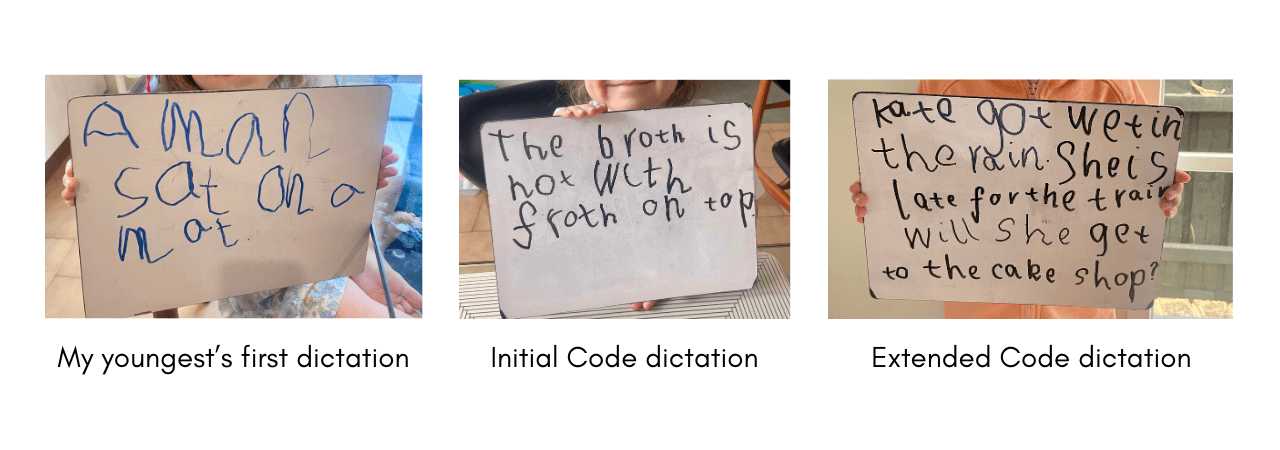
Developing skills and confidence in teaching phonics as a homeschooling parent
Three years in, and my own skills have developed alongside my children. I know the scripts back to front, I understand how to plan, and how to tailor things for each specific child, and that feels so incredibly powerful. I keep a simple planning sheet which lists three activities for each day of the week: what I’m going to do for revision, new material, and reading/dictation, with an extra column to note down any errors my children make so I can cycle this back into revision at a later stage.
My confidence and skills have grown so much that I’d like to take up literacy tutoring using Sounds-Write as a career further down the track. As a homeschooling parent with no formal literacy training, it’s amazing to me the high standard of education that I’ve been able to provide my children through Sounds-Write.
You may also like
Sounds-Write Initial Code app comes top of the class
With more than 9,000 apps marketed as supporting early reading development, parents and educators find it almost impossible to choose truly effective apps for reading instruction. The authors of the study conclude that despite widespread use, most literacy apps do not...
Building Reading Fluency: Practical Strategies for Educators
Fluency is often described as the bridge between learning to decode and reading with true comprehension. But what does fluency really involve and how can teachers best support it in the classroom? In our recent Sounds-Write webinar, Reaching Fluency, Practical...
Do mini-whiteboards clash with the new Writing Framework?
Recently, a teacher asked us this question: “The new statutory framework for writing says children should not be taught writing on a whiteboard or on the carpet, but should be sitting at a table. A number of Sounds-Write lessons involve children writing words and even...
Discover Sounds-Write
Book a free consultation to discuss your individual training needs.
